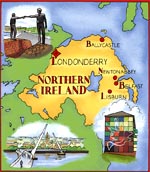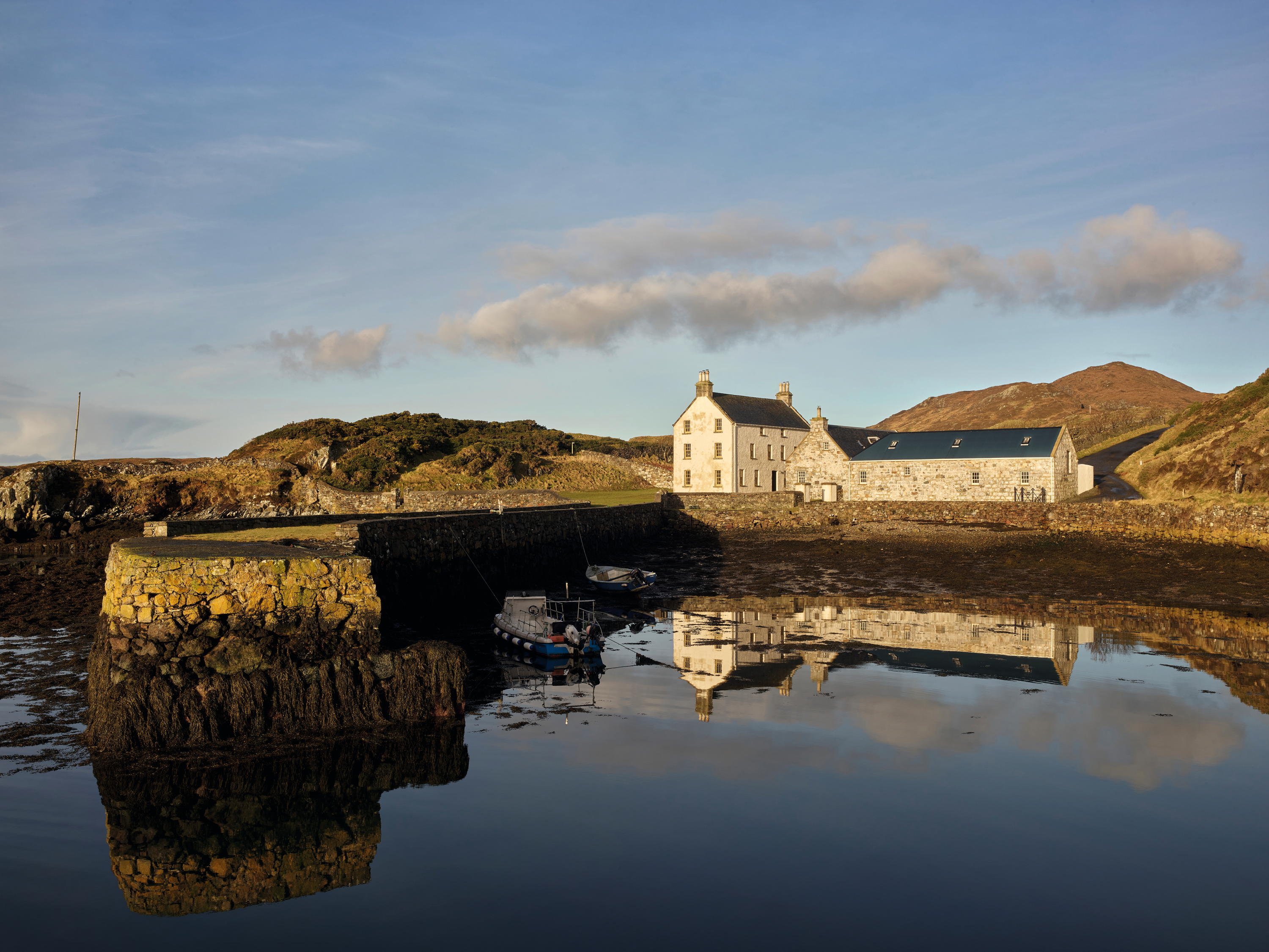City break: Londonderry
Londonderry has a fascinating history finds Sue Lawson


Why I went
Londonderry was 2013's UK City of Culture. The finalists for the Turner Prize were on show in the city, where the winner, Laure Prouvost, was announced just before Christmas. It was also host to one of last year's Radio 4 Reith Lectures, given by the highly successful potter and former Turner Prize winner, Grayson Perry (left). Derry clearly enjoyed its status-Grayson's lecture in the Guild- hall was packed and he was given a standing ovation.
What I discovered
That you can't always call it Londonderry, although that's its legal name. The BBC rule is Londonderry first and Derry for ever after. It's a confusion that epitomises the city's history as a microcosm of the troubled Anglo-Irish relationship. In the 17th century, Derry withstood a terrible siege when the deposed James II (a Catholic) battered at its gates and the Apprentice Boys (Protestants) refused to let him in with the cry that became the Loyalists' tenet: ‘No Surrender.' In modern times, the city's mainly Catholic population became one of the main sources of the civil-rights movement that led to The Troubles.
Where I ate
In two restaurants, both run by the same chef, Ian Orr, and both called Browns-one on either side of the river. The food at both was first class: turbot with gnocchi one night and a pan-seared stone bass with cavolo nero tagliatelle and beetroot gel the next. The grub is getting more and more sophisticated.
Places I visited
Sign up for the Country Life Newsletter
Exquisite houses, the beauty of Nature, and how to get the most from your life, straight to your inbox.
Derry is a small city (population 106,000). Its 17th-century walls are still intact, hence its nickname of the Maiden City. You can stroll along them and cir-cumnavigate the place in half an hour. But the best way to see it is to take a tour with Martin McCrossan (www.derrycitytours.com), who lives and breathes Derry and its history. He took me to St Columb's Cathedral (left) and put in my hands the Promise Chalice, a gilded-silver cup sent in 1613 by the Honourable The Irish Society as a token of a promise to build a cathedral in the city. The promise was honoured some 15 years later. He also drove me round the Bogside, where, in 1972, 14 people were shot and killed by British soldiers during the demonstration that came to be known as Bloody Sunday. He then took me to the Free Derry Museum, where I met John Kelly, now in his sixties, whose brother Michael, then aged 17, was the youngest to die that day. Mr Kelly told me that, when David Cameron visited Derry in June 2010 and apologised for what had happened, it was ‘the best day of my life'.
Where I stayed
At the City Hotel (www.cityhotelderry.com; 00 44 287 136 5800), conveniently placed in the heart of town. I was given the John Hume Suite, named after the local MP who was joint winner with David Trimble, the Unionist MP, of the Nobel Peace Prize for their efforts to reconcile the different communities in Northern Ireland. The hotel sits on the side of the River Foyle, across which lies the elegant new Peace Bridge. One morning, from my bedroom window, I watched dawn break across its largely Unionist eastern side and then steal across to shed light on the opposite, largely Nationalist, bank. The bridge was intended to improve relations between the two communities. Like Hands Across The Divide (left), the sculpture that shows two men reaching towards each other over a deep trench, the bridge is a symbol of the renaissance that Derry is working to achieve.
And what more?
Derry is set in lush, rolling countryside, against a beautiful coastline. The Giant's Causeway is an hour away to the north-east and, to the west, you cross over immediately into Donegal and the Irish Republic. The history of Ireland often makes for grim reading, but nothing can take away its beauty.
How I got there
You can fly direct to Derry, or you can take one of the more frequent flights into Belfast and then drive for about 1½ hours. I took the train. It's a journey of 2¼ hours that trundles through Co Antrim and then follows the Foyle estuary (left) into the city. This was the westernmost Allied port in Europe during the Second World War and the American and Canadian navies, as well as the Royal Navy, were based here. At the end of the war, 62 German U-boats were ordered to sail into the Foyle estuary and surrender.
My impressions
Derry's history is inevitably what makes it fascinating, but the people who live there want to leave their troubled past behind. They like to talk more about their famous sons and daughters, particularly Seamus Heaney (left), one of the greatest poets of our time, as well as a string of distinguished performers and musicians: Dana (All Kinds of Everything), the song-writer Phil Coulter (Puppet On A String and Congratulations), Nadine Coyle of Girls Aloud, the actresses Amanda Burton and Roma Downey and, from a different age, Mrs C. F. Alexander, wife of a 19th- century Bishop of Derry, who wrote All Things Bright and Beautiful, Once in Royal David's City and There is a Green Hill Far Away. The cathedral choirboys rehearse in her music room to this day.
* Follow Country Life on Twitter
Country Life is unlike any other magazine: the only glossy weekly on the newsstand and the only magazine that has been guest-edited by HRH The King not once, but twice. It is a celebration of modern rural life and all its diverse joys and pleasures — that was first published in Queen Victoria's Diamond Jubilee year. Our eclectic mixture of witty and informative content — from the most up-to-date property news and commentary and a coveted glimpse inside some of the UK's best houses and gardens, to gardening, the arts and interior design, written by experts in their field — still cannot be found in print or online, anywhere else.
-
 Rodel House: The Georgian marvel in the heart of the Outer Hebrides
Rodel House: The Georgian marvel in the heart of the Outer HebridesAn improving landlord in the Outer Hebrides created a remote Georgian house that has just undergone a stylish, but unpretentious remodelling, as Mary Miers reports. Photographs by Paul Highnam for Country Life.
By Mary Miers
-
 380 acres and 90 bedrooms on the £25m private island being sold by one of Britain's top music producers
380 acres and 90 bedrooms on the £25m private island being sold by one of Britain's top music producersStormzy, Rihanna and the Rolling Stones are just a part of the story at Osea Island, a dot on the map in the seas off Essex.
By Lotte Brundle